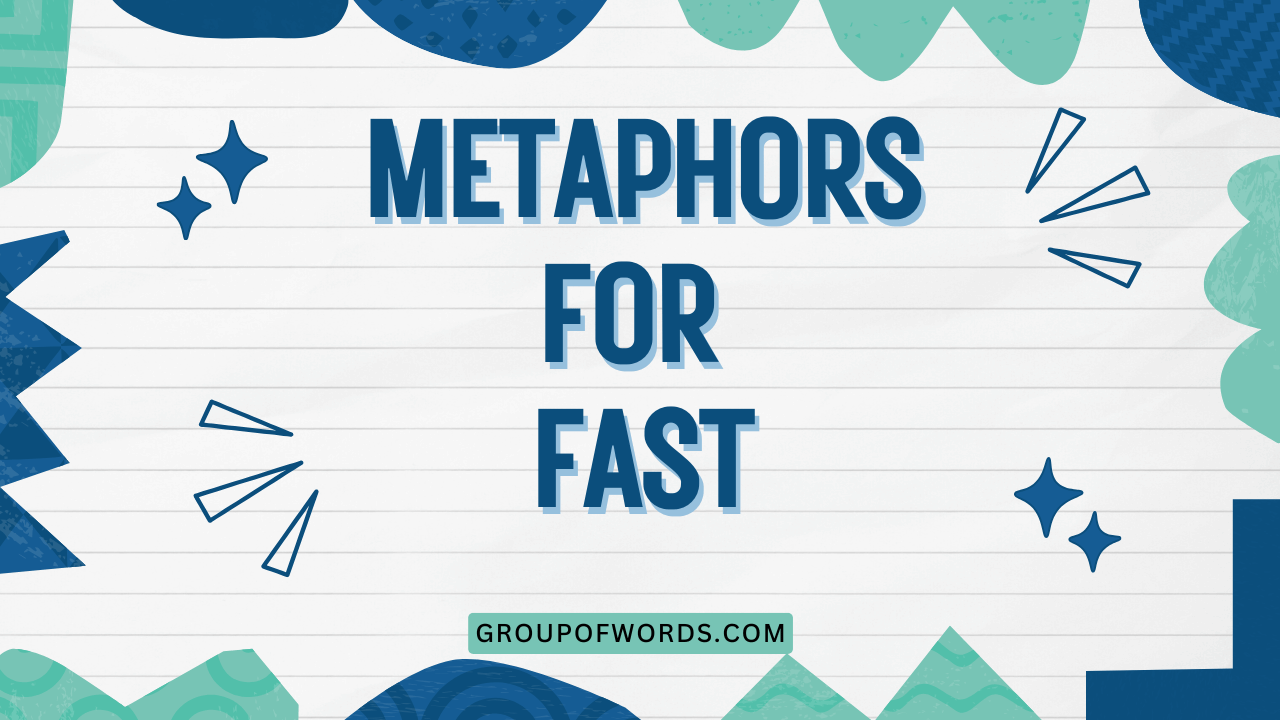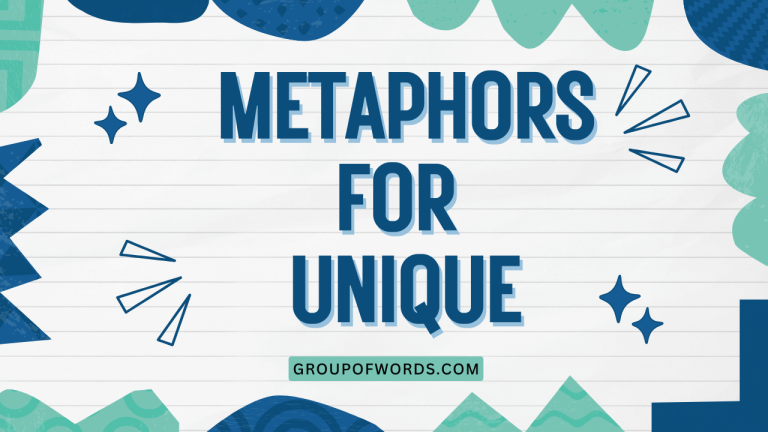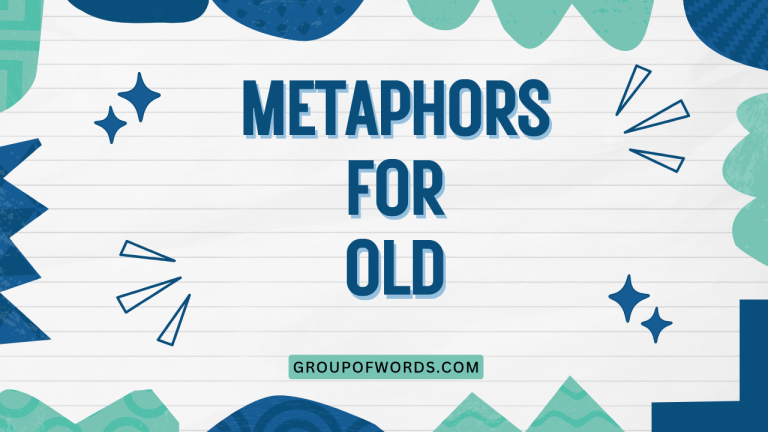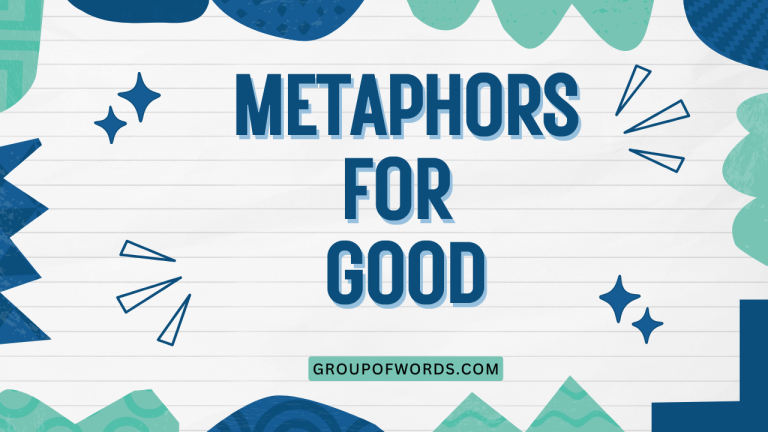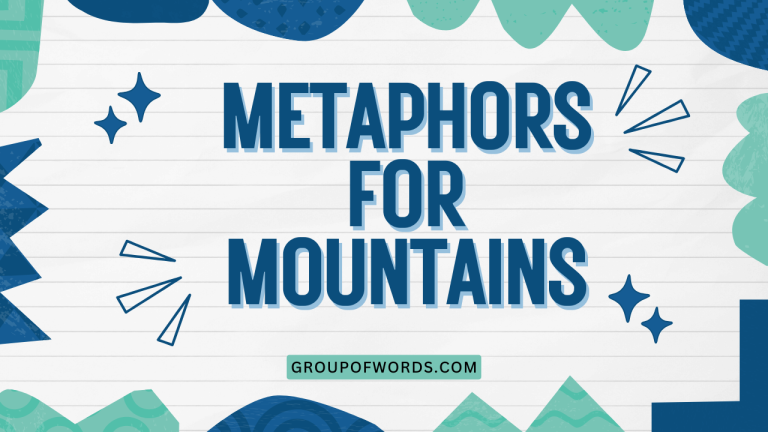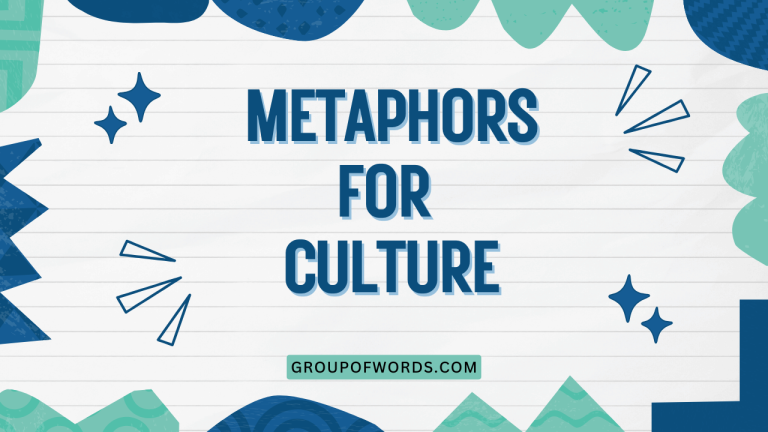Metaphors for Fast: Understanding Figurative Speed
Understanding metaphors for “fast” enhances our ability to grasp nuanced meanings and appreciate the richness of the English language. This article delves into the various metaphorical expressions used to convey speed, examining their underlying implications and contexts.
Mastering these metaphors not only improves comprehension but also enriches one’s own writing and speaking skills. This guide is ideal for English language learners, writers, and anyone seeking to deepen their understanding of figurative language.
This comprehensive guide explores the diverse range of metaphors used to express speed, providing detailed explanations, examples, and practical exercises to help you master this essential aspect of English language proficiency. By the end of this article, you will be able to recognize, interpret, and effectively use metaphors for “fast” in various contexts, adding depth and vibrancy to your communication.
Table of Contents
- Introduction
- Definition of Metaphor for Fast
- Structural Breakdown
- Types and Categories of Metaphors for Fast
- Examples of Metaphors for Fast
- Usage Rules for Metaphors for Fast
- Common Mistakes When Using Metaphors for Fast
- Practice Exercises
- Advanced Topics
- Frequently Asked Questions
- Conclusion
Definition of Metaphor for Fast
A metaphor for “fast” is a figurative expression that uses an image, idea, or object to represent speed without explicitly stating a comparison using words like “like” or “as”. It implies a similarity between the speed being described and the characteristic associated with the image evoked.
The function of these metaphors is to add vividness, emphasis, and emotional resonance to descriptions of speed. They provide a more engaging and memorable way to convey how quickly something is moving or happening.
Metaphors for “fast” can be classified based on the source domain from which they are drawn. Common categories include animal metaphors (e.g., “quick as a fox”), natural phenomena metaphors (e.g., “fast as lightning”), mechanical metaphors (e.g., “moves like a rocket”), and abstract metaphors (e.g., “time flies”).
The context in which a metaphor is used significantly influences its interpretation. For instance, describing a runner as “a cheetah” conveys a different sense of speed and agility than describing them as “a speeding train.”
Understanding the underlying imagery and connotations of different metaphors is crucial for effective communication. Selecting the most appropriate metaphor depends on the specific nuance you wish to convey and the audience you are addressing.
A well-chosen metaphor can transform a mundane description into a compelling and memorable statement.
Structural Breakdown
The basic structure of a metaphor involves two key elements: the tenor (the subject being described) and the vehicle (the image or idea used to represent the subject). In the context of metaphors for “fast,” the tenor is always something moving or happening quickly, and the vehicle is the image that embodies that speed.
Consider the example “He ran like the wind.” Here, “he” (the runner) is the tenor, and “the wind” is the vehicle. The metaphor implies that the runner’s speed is comparable to the wind’s swiftness.
The effectiveness of this metaphor relies on the audience’s understanding of the wind as a symbol of speed and power.
The connection between the tenor and the vehicle is not always explicit. Often, it’s left to the reader or listener to infer the similarity.
This implicit connection is what makes metaphors more engaging than simple comparisons. For example, the phrase “a bolt of lightning” can be used metaphorically to describe someone’s sudden burst of speed, relying on the reader to associate lightning with its rapid and forceful nature.
Furthermore, metaphors can be extended, where the initial comparison is developed with additional details and imagery. For example, “He moved like a rocket, blasting off from the starting line and leaving his competitors in a cloud of dust.” This extended metaphor builds upon the initial image of a rocket to create a more vivid and dramatic portrayal of speed.
Types and Categories of Metaphors for Fast
Metaphors for “fast” can be categorized based on the source of the imagery they employ. Understanding these categories can help you choose the most appropriate metaphor for a given context.
Animal Metaphors
Animal metaphors draw upon the perceived speed and agility of various animals. These metaphors are often used to describe the speed of people, vehicles, or processes.
The choice of animal can also convey additional qualities such as grace, power, or ferocity.
Examples include: “quick as a fox,” “fast as a cheetah,” “darting like a hummingbird,” and “swift as an eagle.” Each of these metaphors evokes a different image and conveys a slightly different nuance of speed. A cheetah suggests raw, untamed speed, while an eagle suggests graceful and effortless speed.
Natural Phenomena Metaphors
Natural phenomena metaphors use elements of nature to represent speed. These metaphors often emphasize the uncontrollable or unstoppable nature of speed.
They can also convey a sense of awe or wonder.
Examples include: “fast as lightning,” “quick as a flash flood,” “swift as the wind,” and “moves like a hurricane.” These metaphors often convey a sense of immense power and rapid movement that is difficult to control.
Mechanical Metaphors
Mechanical metaphors use machines and technology to represent speed. These metaphors often emphasize efficiency, precision, and power.
They are commonly used to describe the speed of vehicles, computers, or other technological processes.
Examples include: “fast as a bullet train,” “moves like a rocket,” “runs like a well-oiled machine,” and “processes information at lightning speed.” These metaphors often convey a sense of technological advancement and unparalleled speed.
Abstract Metaphors
Abstract metaphors use abstract concepts or ideas to represent speed. These metaphors often rely on the audience’s understanding of the implied association.
They can be more subtle and nuanced than other types of metaphors.
Examples include: “time flies,” “the rumor spread like wildfire,” “the news traveled at the speed of light,” and “progress is accelerating.” These metaphors often convey a sense of inevitability and rapid change.
Examples of Metaphors for Fast
Here are some detailed examples of metaphors for “fast,” categorized by type. Each example includes a sentence demonstrating its usage and an explanation of the metaphor’s meaning.
Animal Metaphor Examples
The following table provides examples of animal metaphors used to describe speed. Each example includes a sentence and an explanation of the metaphor’s meaning.
| Metaphor | Example Sentence | Explanation |
|---|---|---|
| Quick as a fox | The pickpocket was as quick as a fox, snatching the wallet before anyone noticed. | Implies both speed and cleverness in executing the action. |
| Fast as a cheetah | The race car driver was as fast as a cheetah on the straightaway. | Conveys extreme speed and agility over a short distance. |
| Darting like a hummingbird | The ballerina’s movements were darting like a hummingbird, precise and rapid. | Suggests rapid, erratic, and precise movements. |
| Swift as an eagle | The eagle dove from the sky, swift as an eagle, to catch its prey. | Conveys a sense of graceful and powerful speed. |
| Nimble as a squirrel | The rock climber was as nimble as a squirrel, scaling the cliff with ease. | Implies agility and quickness in movement, especially in climbing. |
| Fast as a hare | He ran as fast as a hare to escape the pursuing dogs. | Suggests a quick burst of speed, often in a fleeing situation. |
| Sly as a weasel | The politician moved as sly as a weasel, dodging questions from the press. | Conveys quickness combined with cunning and deception. |
| Quick as a cat | She reacted as quick as a cat, catching the falling vase before it shattered. | Implies a rapid and instinctive reaction. |
| Fast as a greyhound | The athlete sprinted as fast as a greyhound, winning the race with a large lead. | Suggests exceptional speed and endurance in running. |
| Agile as a monkey | The child was as agile as a monkey, swinging from branch to branch. | Conveys quickness and dexterity in movement. |
| Spry as a cricket | Despite his age, he was as spry as a cricket, jumping and hopping around. | Implies lively and energetic movement, especially for someone older. |
| Rapid as a swarm of bees | The rumors spread as rapid as a swarm of bees through the office. | Suggests a quick and widespread dissemination of information. |
| Swift as a swallow | The swallow flew swift as a swallow across the open field. | Conveys graceful and rapid flight. |
| Quick as a snake | The magician’s hands were as quick as a snake, making the cards disappear. | Implies a sudden and deceptive speed. |
| Fast as a falcon | The falcon dove as fast as a falcon to catch its prey mid-air. | Suggests a rapid and precise descent. |
| Fleet-footed as a deer | She was as fleet-footed as a deer, navigating the forest trails with ease. | Conveys grace and speed in running through natural terrain. |
| Fast as a gazelle | He ran as fast as a gazelle, easily outpacing his pursuers. | Suggests exceptional speed and agility in escaping danger. |
| Quick as a spider | The spider moved as quick as a spider, trapping the fly in its web. | Implies a rapid and precise movement to capture prey. |
| Rapid as a rabbit | The children scattered as rapid as rabbits when they saw the teacher approaching. | Suggests a quick and disorganized movement in response to a threat. |
| Swift as a salmon swimming upstream | He worked as swift as a salmon swimming upstream, tirelessly overcoming obstacles. | Conveys determined and rapid progress against resistance. |
| Quick as a grasshopper | The child hopped around as quick as a grasshopper, full of energy. | Implies lively and energetic movement with frequent jumps. |
| Fast as a roadrunner | He dashed away as fast as a roadrunner, disappearing into the distance. | Suggests a quick and elusive escape, often in a comical manner. |
| Swift as a peregrine falcon | The peregrine falcon dove as swift as a peregrine falcon, reaching speeds of over 200 mph. | Conveys the extreme speed and precision of a diving falcon. |
| Rapid as a pack of wolves | The team moved as rapid as a pack of wolves, quickly overwhelming the opposition. | Suggests a coordinated and swift attack or movement. |
Natural Phenomena Metaphor Examples
The following table provides examples of natural phenomena metaphors used to describe speed. Each example includes a sentence and an explanation of the metaphor’s meaning.
| Metaphor | Example Sentence | Explanation |
|---|---|---|
| Fast as lightning | The car accelerated as fast as lightning, leaving the other cars behind. | Conveys extreme speed and suddenness. |
| Quick as a flash flood | The news spread as quick as a flash flood through the small town. | Suggests a rapid and overwhelming spread of information. |
| Swift as the wind | The sailboat moved swift as the wind across the open sea. | Conveys a sense of effortless and powerful speed. |
| Moves like a hurricane | The project team moved like a hurricane, completing all tasks ahead of schedule. | Suggests a powerful and unstoppable force of speed. |
| Fast as a shooting star | The idea spread as fast as a shooting star, captivating everyone’s imagination. | Implies a sudden and brilliant burst of speed or impact. |
| Quick as a sunbeam | Her smile appeared as quick as a sunbeam, brightening the room instantly. | Conveys a sudden and radiant burst of joy or positivity. |
| Swift as a river flowing downhill | The conversation flowed as swift as a river flowing downhill, unstoppable and natural. | Suggests a smooth, rapid, and continuous movement or progression. |
| Fast as a volcanic eruption | The anger erupted as fast as a volcanic eruption, shocking everyone present. | Implies a sudden and explosive release of energy or emotion. |
| Quick as a tidal wave | The market crash happened as quick as a tidal wave, devastating the economy. | Conveys an overwhelming and destructive force of speed. |
| Swift as a waterfall | The opportunities presented themselves as swift as a waterfall, one after another. | Suggests a continuous and rapid flow of events or possibilities. |
| Fast as a snow avalanche | The rumors spread as fast as a snow avalanche, burying the truth beneath them. | Implies an overwhelming and destructive spread of misinformation. |
| Quick as a desert mirage | The hope faded as quick as a desert mirage, leaving them disillusioned. | Conveys a fleeting and deceptive appearance of speed or progress. |
| Swift as a forest fire | The panic spread as swift as a forest fire, engulfing the entire community. | Suggests a rapid and uncontrollable spread of fear or chaos. |
| Fast as a solar flare | The technological advancements occurred as fast as a solar flare, transforming society. | Implies a sudden and powerful burst of innovation or change. |
| Quick as a lunar eclipse | The darkness descended as quick as a lunar eclipse, shrouding the world in shadow. | Conveys a sudden and complete obscuration or disappearance. |
| Swift as a meteor shower | The opportunities came as swift as a meteor shower, dazzling and fleeting. | Suggests a brief and spectacular display of rapid events or possibilities. |
| Fast as a dust devil | The argument escalated as fast as a dust devil, swirling out of control. | Implies a sudden and chaotic escalation of conflict or disagreement. |
| Quick as a heatwave | The discomfort settled in as quick as a heatwave, making everyone restless. | Conveys a sudden and oppressive feeling of discomfort or unease. |
| Swift as a cloud passing the sun | The moment of joy was as swift as a cloud passing the sun, quickly overshadowed by reality. | Suggests a brief and fleeting moment of happiness or relief. |
| Fast as a landslide | The company’s reputation crumbled as fast as a landslide after the scandal broke. | Implies a sudden and catastrophic collapse or failure. |
| Quick as a ripple in a pond | The effect was as quick as a ripple in a pond, spreading outwards from a single point. | Conveys a rapid and expansive spread of influence or consequence. |
| Swift as a stream of consciousness | Her thoughts flowed as swift as a stream of consciousness, unfiltered and rapid. | Suggests a continuous and uninhibited flow of ideas or perceptions. |
| Fast as a waterfall cascading down the mountain | The challenges arrived as fast as a waterfall cascading down the mountain, relentless and overwhelming. | Implies a continuous and powerful influx of difficulties or obstacles. |
| Quick as a rainbow appearing after a storm | The hope emerged as quick as a rainbow appearing after a storm, bringing renewed optimism. | Conveys a sudden and inspiring burst of hope or positivity. |
Mechanical Metaphor Examples
The following table provides examples of mechanical metaphors used to describe speed. Each example includes a sentence and an explanation of the metaphor’s meaning.
| Metaphor | Example Sentence | Explanation |
|---|---|---|
| Fast as a bullet train | The new computer system is as fast as a bullet train, processing data in seconds. | Conveys exceptional speed and efficiency. |
| Moves like a rocket | The company’s growth moved like a rocket, soaring to new heights in a short time. | Suggests rapid and dramatic progress. |
| Runs like a well-oiled machine | The project team runs like a well-oiled machine, completing tasks smoothly and efficiently. | Conveys efficiency, precision, and reliability. |
| Processes information at lightning speed | The supercomputer processes information at lightning speed, solving complex problems in moments. | Implies unparalleled speed in data processing. |
| Fast as a race car | The negotiation moved as fast as a race car, quickly reaching a favorable agreement. | Suggests a rapid and competitive progression. |
| Quick as a robotic arm | The surgeon’s movements were as quick as a robotic arm, precise and efficient. | Conveys precision and efficiency in execution. |
| Swift as a conveyor belt | The production line moved as swift as a conveyor belt, producing goods at a steady pace. | Suggests continuous and reliable speed. |
| Fast as a jet plane | The rumors spread as fast as a jet plane, reaching every corner of the globe. | Implies a rapid and widespread dissemination. |
| Quick as a laser beam | The solution appeared as quick as a laser beam, focusing directly on the problem. | Conveys precision and directness in addressing an issue. |
| Swift as a digital signal | The message traveled as swift as a digital signal across the internet. | Suggests instantaneous communication. |
| Fast as a high-speed internet connection | Downloading the file was as fast as a high-speed internet connection, completing almost instantly. | Implies rapid data transfer. |
| Quick as a camera shutter | The moment passed as quick as a camera shutter, capturing it in a fleeting memory. | Conveys a brief and instantaneous event. |
| Swift as an automated system | The process was as swift as an automated system, requiring minimal human intervention. | Suggests efficiency and automation. |
| Fast as a modern printing press | The newspapers rolled off the presses as fast as a modern printing press, delivering the latest news. | Implies rapid and efficient production. |
| Quick as a computer booting up | The presentation loaded as quick as a computer booting up, ready in seconds. | Conveys rapid initiation or startup. |
| Swift as a drone flying through the air | The drone moved as swift as a drone flying through the air, capturing aerial footage effortlessly. | Suggests agility and speed in aerial movement. |
| Fast as a self-driving car | The navigation system adjusted as fast as a self-driving car, seamlessly rerouting the journey. | Implies automated and rapid adjustments. |
| Quick as a microwave heating up food | The meal heated up as quick as a microwave heating up food, ready to eat in minutes. | Conveys rapid heating or preparation. |
| Swift as a 3D printer creating a model | The prototype was created as swift as a 3D printer creating a model, bringing the design to life. | Suggests rapid prototyping and creation. |
| Fast as a satellite orbiting the Earth | The data transmission was as fast as a satellite orbiting the Earth, providing real-time updates. | Implies rapid and global communication. |
| Quick as an assembly line | The production process was as quick as an assembly line, churning out products efficiently. | Conveys standardized and rapid production. |
| Swift as a train hurtling down the tracks | The project progressed as swift as a train hurtling down the tracks, unstoppable and on schedule. | Suggests rapid and unyielding progress. |
| Fast as a server processing requests | The website responded as fast as a server processing requests, providing a seamless user experience. | Implies rapid and efficient server response. |
Abstract Metaphor Examples
The following table provides examples of abstract metaphors used to describe speed. Each example includes a sentence and an explanation of the metaphor’s meaning.
| Metaphor | Example Sentence | Explanation |
|---|---|---|
| Time flies | Time flies when you’re having fun, and the vacation seemed to end in an instant. | Conveys the perception that time passes quickly. |
| The rumor spread like wildfire | The rumor spread like wildfire through the office, causing widespread panic. | Suggests a rapid and uncontrollable spread of information. |
| The news traveled at the speed of light | The news of the victory traveled at the speed of light, reaching every corner of the country. | Implies instantaneous communication or dissemination. |
| Progress is accelerating | Technological progress is accelerating, transforming society at an unprecedented rate. | Conveys a sense of increasing speed and change. |
| The trend caught on like a storm | The new fashion trend caught on like a storm, sweeping through the youth culture. | Suggests a rapid and overwhelming adoption of a trend. |
| The conversation flowed like a river | The conversation flowed like a river, effortlessly moving from one topic to another. | Conveys a smooth and continuous progression. |
| The project gained momentum | The project gained momentum, quickly advancing towards its completion. | Suggests increasing speed and efficiency. |
| The change was instantaneous | The effect was instantaneous, producing immediate results. | Implies an immediate and noticeable impact. |
| The reaction was prompt | The company’s reaction was prompt, addressing the issue immediately. | Conveys a quick and decisive response. |
| The decision was swift | The judge’s decision was swift, bringing closure to the case. | Suggests a quick and decisive judgment. |
| The recovery was rapid | His recovery was rapid, returning to work in record time. | Implies a quick and efficient healing process. |
| The growth was exponential | The company’s growth was exponential, doubling its revenue in a year. | Conveys a very rapid and accelerating increase. |
| The development was swift | The city’s development was swift, transforming its skyline in a decade. | Suggests rapid and significant progress. |
| The conclusion was immediate | The detective reached an immediate conclusion, solving the mystery quickly. | Implies a quick and decisive determination. |
| The transformation was sudden | Her transformation was sudden, surprising everyone who knew her. | Conveys a quick and unexpected change. |
| The decline was precipitous | The company’s decline was precipitous, falling from success to bankruptcy. | Suggests a rapid and dramatic fall. |
| The escalation was rapid | The conflict’s escalation was rapid, quickly spiraling out of control. | Implies a quick and dangerous increase. |
| The expansion was swift | The business’s expansion was swift, opening new branches across the country. | Conveys a quick and widespread growth. |
| The integration was seamless | The new software’s integration was seamless, causing no disruption to workflow. | Suggests a quick and smooth incorporation. |
| The turnover was brisk | The store’s turnover was brisk, with customers constantly coming and going. | Implies a quick and continuous exchange. |
| The implementation was immediate | The new policy’s implementation was immediate, taking effect the next day. | Conveys a quick and direct application. |
| The response was lightning-fast | The emergency services’ response was lightning-fast, arriving at the scene in minutes. | Suggests an exceptionally quick reaction. |
| The solution was swift | The engineer devised a swift solution, resolving the problem efficiently. | Implies a quick and effective resolution. |
Usage Rules for Metaphors for Fast
When using metaphors for “fast,” it’s important to consider several factors to ensure clarity and effectiveness. Firstly, the metaphor should be appropriate for the context.
A mechanical metaphor might be suitable for describing the speed of a computer, while an animal metaphor might be more appropriate for describing the speed of an athlete.
Secondly, the metaphor should be easily understood by the audience. Avoid obscure or overly complex metaphors that might confuse or alienate your readers or listeners.
The goal is to enhance understanding, not to obfuscate it.
Thirdly, be consistent with the tone and style of your writing. A highly formal context might not be suitable for a whimsical or humorous metaphor.
Choose metaphors that align with the overall tone of your communication.
Finally, avoid clichés. Overused metaphors can lose their impact and make your writing sound unoriginal.
Strive to use fresh and creative metaphors that capture the reader’s attention and convey your message in a memorable way.
Common Mistakes When Using Metaphors for Fast
One common mistake is using mixed metaphors, where the tenor is compared to two or more vehicles that are incompatible. For example, “He was a rocket, but he also had to keep his eye on the ball.” This mixes the image of a rocket with the image of a ball game, creating a confusing and nonsensical comparison.
Another mistake is using metaphors that are too literal or obvious. A metaphor should offer a fresh perspective or insight, not simply state the obvious.
For example, saying “He was as fast as fast” is redundant and lacks any metaphorical value.
A further mistake is using metaphors that are culturally inappropriate or insensitive. Be mindful of the cultural connotations of different images and avoid metaphors that might be offensive or misunderstood by certain audiences.
Here are some examples of incorrect and correct usage:
| Incorrect | Correct | Explanation |
|---|---|---|
| He was a rocket, but he also had to keep his eye on the ball. | He was a rocket, blasting through the competition. | Avoid mixing incompatible metaphors. |
| He was as fast as fast. | He was as fast as a speeding bullet. | Use metaphors that offer a fresh perspective. |
| The project was a train wreck gaining momentum. | The project was a runaway train. | Avoid contradictory imagery within a metaphor. |
Practice Exercises
Test your understanding of metaphors for “fast” with these practice exercises. Choose the best metaphor to complete each sentence.
- The news spread __________ through the internet.
- as fast as a snail
- like a slow-moving river
- like wildfire
Answer: c. like wildfire
- The runner was __________ on the track.
- as slow as molasses
- as fast as a cheetah
- like a parked car
Answer: b. as fast as a cheetah
- The company’s growth was __________.
- stagnant
- accelerating
- declining
Answer: b. accelerating
- The car moved __________ down the highway.
- like a turtle
- swift as the wind
- as heavy as a rock
Answer: b. swift as the wind
Rewrite the following sentences using a metaphor for “fast”:
- The computer processes data very quickly.
Answer: The computer processes data at lightning speed.
- The rumor spread rapidly throughout the school.
Answer: The rumor spread like wildfire throughout the school.
- The athlete ran extremely fast during the race.
Answer: The athlete ran as fast as a cheetah during the race.
Advanced Topics
For those looking to delve deeper into the subject, consider exploring the cognitive science behind metaphors. Understanding how the brain processes metaphorical language can offer insights into why certain metaphors are more effective than others.
Additionally, research the use of metaphors in different cultures and languages to broaden your understanding of cross-cultural communication.
Another advanced topic is the creation of original metaphors. Experiment with combining different source domains to create unique and memorable expressions.
For example, you might combine a mechanical image with an abstract concept to describe speed in a novel way.
Consider also the role of metaphors in shaping our understanding of complex issues. Metaphors are not just decorative devices; they can influence how we perceive and interpret the world around us.
Analyzing the metaphors used in political discourse, scientific communication, and everyday conversations can reveal underlying assumptions and biases.
Frequently Asked Questions
What is the difference between a metaphor and a simile?
A metaphor is a direct comparison between two unlike things without using “like” or “as,” while a simile uses “like” or “as” to make the comparison explicit. For example, “He is a cheetah” (metaphor) versus “He is as fast as a cheetah” (simile).
How can I avoid using clichés when creating metaphors for “fast”?
To avoid clichés, try to think outside the box and consider less common associations. Brainstorm a wide range of images and ideas related to speed, and then look for unexpected connections.
Also, read widely and pay attention to how other writers use metaphors effectively.
Are some types of metaphors for “fast” more effective than others?
The effectiveness of a metaphor depends on the context and the audience. Some metaphors might be more appropriate for formal writing, while others might be better suited for informal conversation.
Consider the specific nuance you want to convey and choose a metaphor that aligns with your overall communication goals.
How can I improve my ability to understand and interpret metaphors for “fast”?
The best way to improve your understanding of metaphors is to practice reading and listening actively. Pay attention to the figurative language used by others and try to identify the underlying connections between the tenor and the vehicle.
Also, expand your vocabulary and knowledge of different subjects to broaden your range of associations.
Conclusion
Mastering metaphors for “fast” is a valuable skill that can enhance your communication abilities and deepen your understanding of the English language. By understanding the different types of metaphors, following usage rules, and avoiding common mistakes, you can effectively use figurative language to convey speed in a vivid and memorable way.
Keep practicing and experimenting with different metaphors to develop your own unique style and voice.
